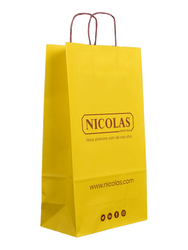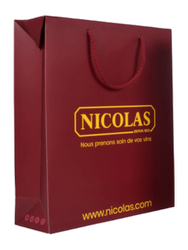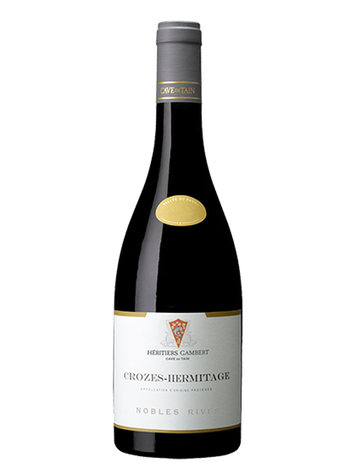CROZES-HERMITAGE NOBLES RIVES
Ref : 498086
i.e. 22.53 € / liter
Select a store to access the availability of this product in the store of your choice
Our oenologists' opinion
Well-rounded
Dark purple colour with plum highlights. The nose is open, with notes of blackberry coulis, milk chocolate and strawberry jam. Supple, velvety, fleshy attack, with notes of black fruit and spices, supple tannins, small body, small character. Fairly light finish, small envelope, medium persistence on spices, typicality. Finishes on cocoa.
Robe
Purple
- Keeping level Ready to drink
- Service temperature 16°
Our food and wine pairings
- Red meats
- Strong cheese
- Game
Features
Body ? The body is the way a wine feels inside the mouth. Several factors, such as the alcohol content and the presence of tannins, contribute to the feel of the wine.
Freshness ? The freshness of a wine is defined by its level of acidity. Unlike rounded wines, fresh wines are easy to drink, and are more lively. Acidity plays a necessary part in a wine's structure.
Aging ? All wines do not have the same aging potential. Some are supposed to be consumed at a young age while others must be kept for longer periods of time.
Tannins ? Coming from stems, grape pips and their storage barrels, the tannin gives structure to red wines only.
Domain and appellation
-
Cave de Tain
Founded in 1933 by Louis Gambert de Loche, the Cave de Tain benefits from the expertise of nearly 300 winegrowers spread over around 1,000 hectares of vines to produce Hermitage, Crozes-Hermitage, Saint-Joseph, Cornas and Saint-Péray appellation wines as well as vins de pays. Terroir : Granite in the northern part of the vineyard, fluvio-glacial alluvium and terraces of rolled Rhône pebbles in the southern part. Some loess (wind-blown deposits) in places. Vinification: Strict selection of grapes according to origin and ripeness. All grapes are destemmed. Traditional fermentation in temperature-controlled stainless steel or concrete vats. Vatting for 20 to 25 days using gentle extraction methods. Fermentation and maceration temperatures controlled at around 26°C. Malolactic fermentation in vats before ageing. Ageing: 9 to 12 months, partly in vats to preserve the purity and freshness of the fruit and partly in 400-litre oak barrels of varying ages (40%).
-
Your cellarman's advice
-

PAPER BAG FOR 3 BOTTLES 0, € 20 0.20Delivery in 24/72h -

SAKEBOX 3 BOTTLES 1, € 30 1.30Delivery in 24/72h -
CROZES HERMITAGE BLANC  WineRhône Crozes Hermitage AOC 202317, € 30 17.30
WineRhône Crozes Hermitage AOC 202317, € 30 17.30i.e. 23.07 € / liter
Bottle 75 cLDelivery in 24/72h -
BOURGOGNE PINOT NOIR NUITON  WineBurgundy Bourgogne AOC / Côteaux bourguignons AOC 202216, € 90 16.90
WineBurgundy Bourgogne AOC / Côteaux bourguignons AOC 202216, € 90 16.90i.e. 22.53 € / liter
Bottle 75 cLDelivery in 24/72h



